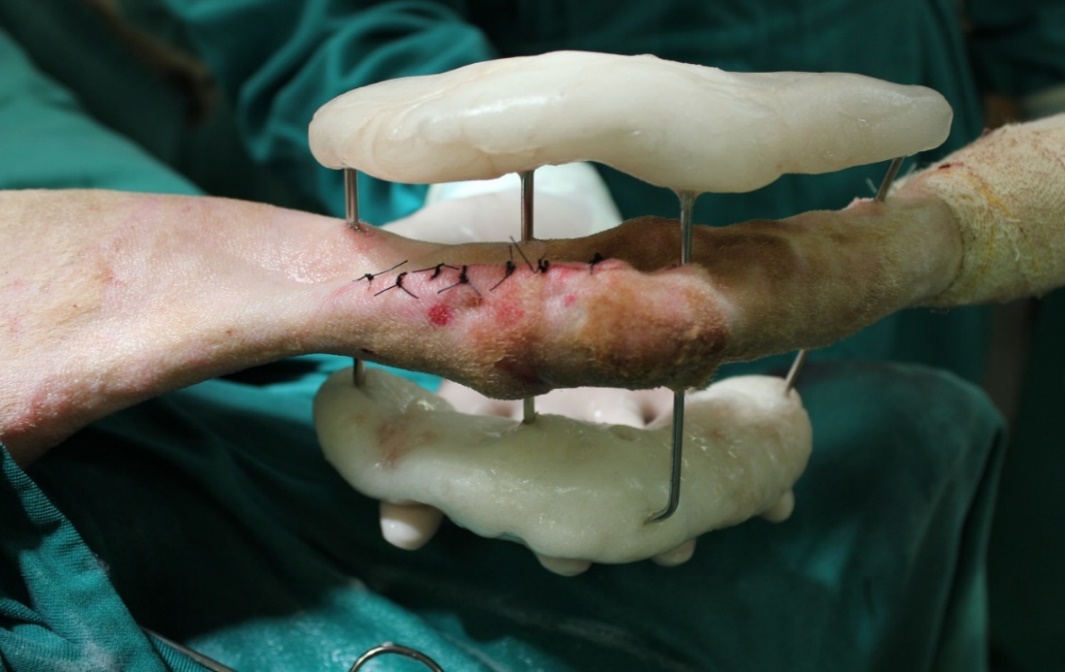Post-traumatic calcaneal tenorrhaphy associated to plaque and external skeletal fixative in dog: case report
DOI:
https://doi.org/10.21708/avb.2020.14.4.9537Abstract
The common calcaneal tendon is one of the most injured tendons in dogs. Regardless the cause, if untreated, the injury may increase permanently compromising the injured limb function. This is a case reported in a seven years old, male, 31.5 Kg, very hectic behavior, Labrador dog. The dog had been suffered a cut by walking on a wasteland. At the clinical examination, he presented claudication, knee hyperextension and tarsal hyperflexion. At the common calcaneal tendon palpation, a loss of continuity was realized characterizing a rupture. The injury was surgically treated by approximating the tendon´s stumps. Aiming to reduce the tension over the tendon, a plaque was sutured in the tendon caudal surface and the tarsocrural joint was temporarily immobilized. The calcaneal tenorrhaphy with modified Kessler suture associated to an orthopedical plaque and external skeletal fixative showed to be efficient to promote a dog´s common calcaneal tendon early repairing. The healing occurred by first intention and the injured limb had a deambulatory restoration even in the first postoperative week. Such conducts have also to be considered in calcaneal tenorrhaphies in active, heavy and/or uncooperative patients.
Downloads

Downloads
Pubblicato
Fascicolo
Sezione
Licenza
Autores que publicam na Acta Veterinaria Brasilica concordam com os seguintes termos: a) Autores mantém os direitos autorais e concedem à revista o direito de primeira publicação, com o trabalho simultaneamente licenciado sob a Licença Creative Commons Attribution que permite o compartilhamento do trabalho com reconhecimento da autoria e publicação inicial nesta revista. b) Autores têm autorização para assumir contratos adicionais separadamente, para distribuição não-exclusiva da versão do trabalho publicada nesta revista (ex.: publicar em repositório institucional ou como capítulo de livro), com reconhecimento de autoria e publicação inicial nesta revista. c) Autores têm permissão e são estimulados a publicar e distribuir seu trabalho online (ex.: em repositórios institucionais ou na sua página pessoal) a qualquer ponto antes ou durante o processo editorial, já que isso pode gerar alterações produtivas, bem como aumentar o impacto e a citação do trabalho publicado (Veja O Efeito do Acesso Livre).


 Esta obra está licenciada com uma Licença
Esta obra está licenciada com uma Licença 